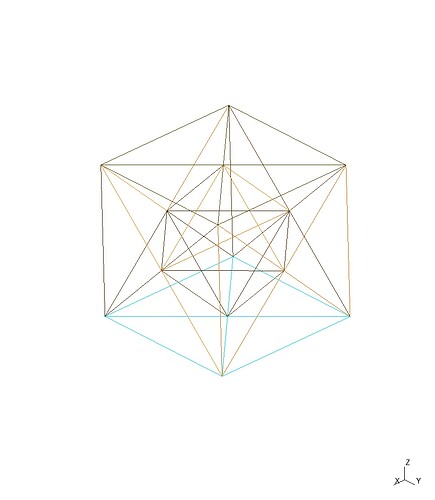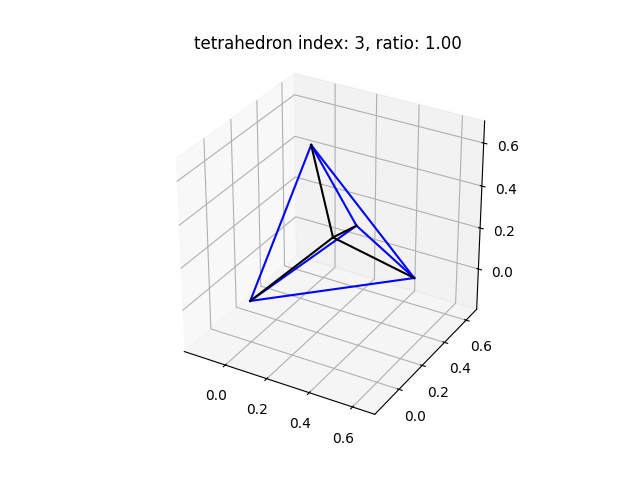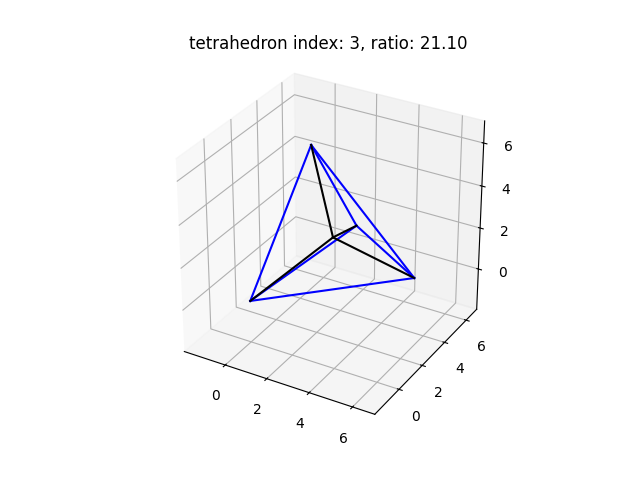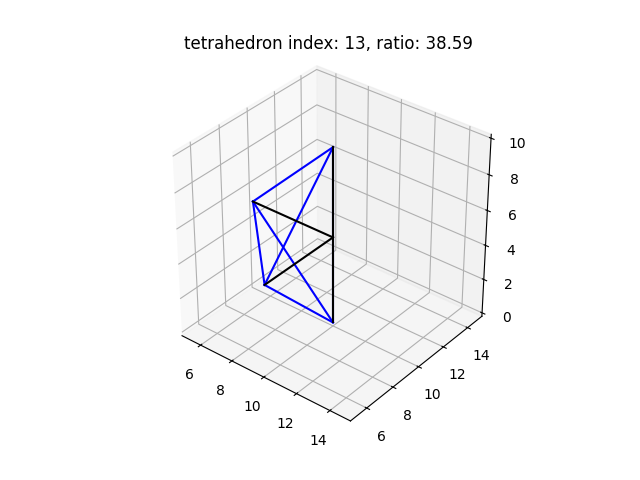Hi @Juan,
during one of my simulations I noticed some strange current values which seemed higher than expected, so I build the following MVP to test a really simple structure, which is based on the gmsh_diode3d example.
This example is a simple n-Volume where I set the doping und mobility in such a way, that the whole volume has a theoretical resistance of exactly 1 ohm. Addtionally, I used the extended precision and quite strict convergence criteria. I use devsim 2.6.4 and python 3.10.
# Copyright 2013 DEVSIM LLC
#
# SPDX-License-Identifier: Apache-2.0
from devsim import *
from devsim.python_packages.simple_physics import *
import diode_common
def print_currents(device, contact):
"""
Print out contact currents
"""
ece_name = "ElectronContinuityEquation"
hce_name = "HoleContinuityEquation"
contact_bias_name = GetContactBiasName(contact)
electron_current= get_contact_current(device=device, contact=contact, equation=ece_name)
hole_current = get_contact_current(device=device, contact=contact, equation=hce_name)
total_current = electron_current + hole_current
voltage = get_parameter(device=device, name=GetContactBiasName(contact))
data = (voltage, electron_current, hole_current, total_current)
print(f"{contact:10}{voltage:+.3e}\t{electron_current:+.3e}\t{hole_current:+.3e}\t{total_current:+.3e}")
return data
def print_all_currents():
"""
Prints all currents to console and returns outmap of values. !Currently only functional when all contacts are
silicon contacts!
:return:
"""
print("\nSolution:")
print("{0:10}{1:15}{2:12}{3:12}{4:10}".format("Contact", "Voltage", "Electron", "Hole", "Total"))
print(" Current Current Current")
device_list = get_device_list()
for device in device_list:
contact_list = get_contact_list(device=device)
outmap = {}
for contact in contact_list:
outmap[contact] = print_currents(device, contact)
return outmap
device="diode3d"
region="Bulk"
diode_common.Create3DGmshMesh(device, region)
#diode_common.Create2DGmshMesh(device, region)
diode_common.SetParameters(device=device, region=region)
set_parameter(device=device, region=region, name="mu_n", value=1e5)
set_parameter(device=device, region=region, name="mu_p", value=1)
# this is the devsim format
write_devices (file="gmsh_diode3d_out.msh")
set_parameter(name="extended_solver", value="True")
set_parameter(name="extended_model", value="True")
set_parameter(name="extended_equation", value="True")
####
#### NetDoping
####
node_model(device=device, region=region, name="Acceptors", equation="0.0")
node_model(device=device, region=region, name="Donors", equation="1.0/1.6*1e19")
node_model(device=device, region=region, name="NetDoping", equation="Donors-Acceptors;")
diode_common.InitialSolution(device, region)
####
#### Initial DC solution
####
solve(type="dc", absolute_error=1.0, relative_error=1e-12, maximum_iterations=100)
###
### Drift diffusion simulation at equilibrium
###
diode_common.DriftDiffusionInitialSolution(device, region)
solve(type="dc", absolute_error=1e-10, relative_error=1e-12, maximum_iterations=50)
v = 0.1
while v < 1.01:
set_parameter(device=device, name=GetContactBiasName("top"), value=v)
solve(type="dc", absolute_error=1e-10, relative_error=1e-12, maximum_iterations=30)
print_all_currents()
v += 0.1
element_from_edge_model(edge_model="ElectricField", device=device, region=region)
element_from_edge_model(edge_model="ElectronCurrent", device=device, region=region)
element_from_edge_model(edge_model="HoleCurrent", device=device, region=region)
write_devices(file="gmsh_nVolume_dd.dat", type="tecplot")
write_devices(file="gmsh_nVolume_dd.msh", type="devsim")
write_devices(file="gmsh_nVolume_dd.msh", type="vtk")
The simulation for the 3D case produces this result:
Solution:
Contact Voltage Electron Hole Total
Current Current Current
bot +0.000e+00 -2.866e+00 -7.336e-23 -2.866e+00
top +1.000e+00 +2.866e+00 +7.336e-23 +2.866e+00
So instead of the expected current of 1 V / 1 ohm = 1A, I get around 2.9 A.
Performing the same simulation for the 2D case with “Create2DGmshMesh”:
Solution:
Contact Voltage Electron Hole Total
Current Current Current
bot +0.000e+00 -1.003e+05 -2.569e-18 -1.003e+05
top +1.000e+00 +1.003e+05 +2.569e-18 +1.003e+05
Here the result looks a lot better with 1.003e5 A/cm * 1e-05 cm = 1.003 A, albeit not exact.




